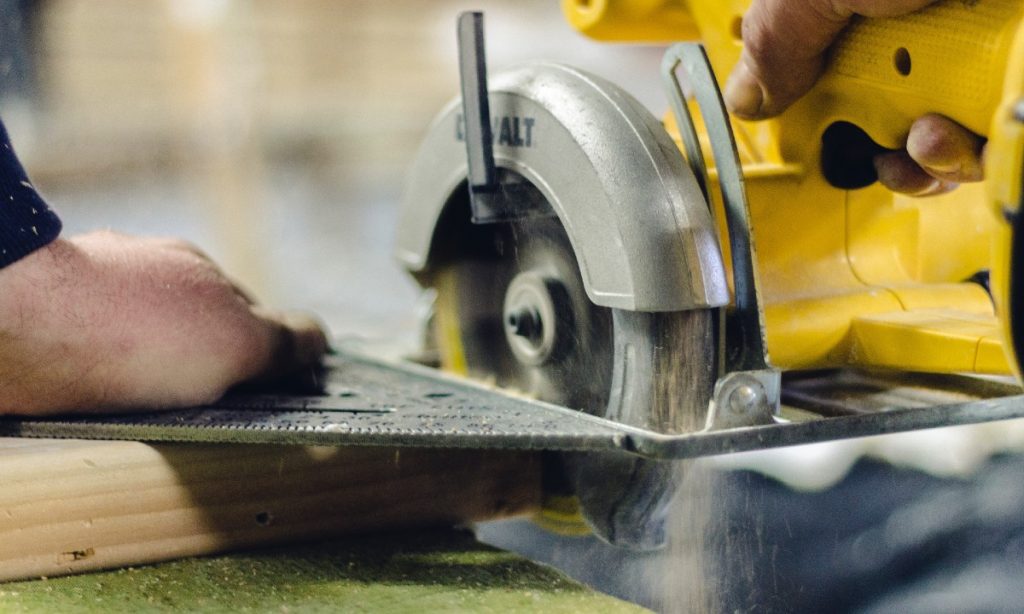You Should Not Use These Tools Unless You Are a Pro

You know the drill; having multiple tools is good, but having specific ones is even better. While power tools are incredibly useful and simplify your job, accidents from such equipment are on the rise, with injuries ranging from small bruising and bumps to concussions and catastrophic mishaps. So, if you are not a carpenter or landscaper and don’t use these instruments on a regular basis, you might want to skip opting for such tools. Most of the equipment is routinely available in our garages for various personal projects, and if not handled carefully, it can do significant harm.
TOOLS YOU SHOULD AVOID
Electric concrete saw
An electric concrete saw — also referred to as a con saw or road saw, is a piece of high-powered equipment designed to cut through hard and solid materials, for instance, tiles, asphalt concrete, and brick. Concrete saws come in a variety of shapes, sizes, and forms. Chainsaws, portable circular saws, walk-behind saws, and hydraulic wall saws are by far the most common types of saws.
Small particulates produced by sawing, crushing, or grinding can penetrate deep into the lungs. The majority of cement and masonry items contain a substantial quantity of sand. When you breathe dust, silica particles tend to injure your lungs, creating silicosis, a debilitating, chronic, and irreversible respiratory condition caused by the deposition of silica in the lungs. So, if you are not a professional with the necessary personal protective equipment to perform such work, you should avoid it.
Table saw
Annually, these lethal instruments cause nearly 30,000 injuries. Their revolving blades accomplish almost 3,000 rotations each minute, and even with safeguard mechanisms and other safety precautions in place, they can cause serious lacerations or even amputations.
But if you really need to use this equipment, probably add a feature that will halt the blade if it touches any bodily part. Other accouterments, like a spitter or feather board, can also assist you in avoiding traumatic injury.
Nail guns
This equipment can save you hours of laborious building work, but they are extremely dangerous. If we look at the stats, over 37,000 people have to visit the emergency room each year due to a power nailer accident. If you use one of these instruments, make a note of whether it is preset to manual or fire on touch. Although most of these injuries are to the hand or foot, fatal incidents can occur.
Riding lawn mower
Another entry in the dangerous tool haul that essentially “makes life simpler” category, operating a riding lawnmower wrong, might have life-changing repercussions. Though they make outdoor labor more enjoyable, people should never relax their guard around this equipment. Riding lawn mowers may run over people’s feet, but they can also run over pebbles or other objects, transforming them into highly deadly projectiles.
Circular saw
Circular saws are also useful garage tools, though they eliminate the danger of a table saw and place it right in your hand. While useful and versatile, circular saws must never be played down; using a circular saw without adequately laying it down may lead the tool to jump back in the user’s hand, culminating in a potentially fatal disaster. If the object being sheared is not well attached, this could end in an array of several other injuries.
Snow blower
Projectiles can be launched from the discharge funnel. Snow blowers pick up anything on the ground, including pebbles and sharp sticks, and fire them out at deadly speeds — strong enough in some circumstances for a boulder to smash a glass window. A youngster — or cat, or neighbor — who unintentionally crosses into the torrent of snow might be injured by these rapidly moving projectiles, with the possibility of eye damage. So always keep an eye on where the chute is pointed and make sure no one is in the line of the snow stream. Remember, keeping children and pets indoors is the best option.
